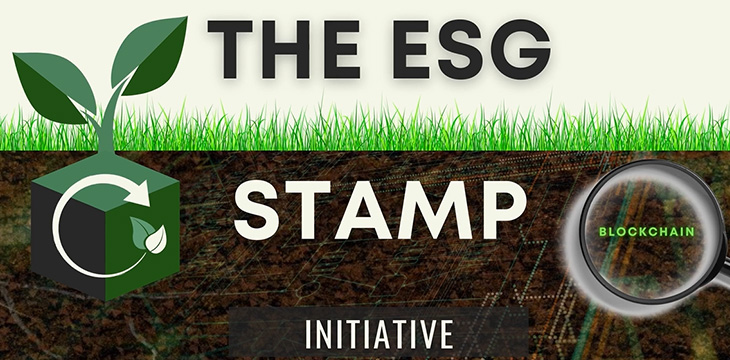|
Getting your Trinity Audio player ready...
|
The Bitcoin blockchain could force companies to be more honest about their environmental claims. As investors and consumers both large and small begin to look closer at corporate ethics, the issue of “greenwashing” and other exaggerations is even becoming a regulatory debate. A project called “Proof of ESG” is devising frameworks for companies to gather data and report such claims, timestamping and verifying them on the BSV blockchain. Proof of ESG’s initial goals are focusing on CO2 emissions.
“Greenwashing” describes corporate claims of environmental friendliness with little or no evidence to back them up. Even at a consumer level, you’ve probably seen examples of this: products with a green check mark sticker or redesigned packaging/logos. Close examination of the small print (if there is any) often reveal nothing to warrant the mark. Similar claims are made of various products’ health benefits, especially in the food and fitness categories.
“ESG” refers to “environmental, social and governance” considerations in evaluating a company’s performance, as well as its financials. Throughout history, investors have always engaged in a degree of activism by including considerations other than financial performance in deciding where to put their money. ESG emerged from the “ethical investment” concept of decades past, which became more defined as the “triple bottom line” in the late 1990s. Wikipedia describes it as “a form of corporate social credit score.”
More recently, there have been moves to formalize these concepts into actual regulation. This move is controversial, since it allows national governments and supranational bodies like the United Nations to determine the values investors should judge. Economists such as Milton Friedman argued against early forms of ESG as long as 50-60 years ago for this reason.
Even without regulation, the firms that dominate the global financial industry have begun to set their own guidelines, saying they’ll be looking at issues like diversity and gender representation on corporate boards before investing.
The U.S. Securities and Exchange Commission (SEC) already has an ESG task force and is soon expected to issue a proposal for the ability to force companies to disclose their “climate risk” exposure—as well as other ESG-related issues.
The prominence of ESG goals in recent decades (even as a voluntary investment consideration) has led some companies to make exaggerated or outright fraudulent claims about their “environmental friendliness” in the hope of gaining investors’ attention. Should ESG concepts become more formalized, such claims will likely lead to litigation—and thus investment risk.
What does Proof of ESG do?
One common criticism of ESG principles is that they’re qualitative and intangible—which has led to the exaggerated claims, and makes it difficult for companies to verify genuine ones.
Founded by Bryan Daugherty, Proof of ESG is an “initiative” and “agenda” to promote more specific frameworks and processes for reporting ESG-related data on the BSV blockchain. It also operates an “ESG consultancy” of BSV industry professionals whose services are available for businesses looking to incorporate these functions.
It describes its system as “incentivized, voluntary, verifiable and auditable,” especially when paired with more formalized reporting frameworks (which wouldn’t necessarily have to be enshrined in regulation).
Once formalized, the processes would use more familiar technological elements such as IoT devices and automated blockchain contracts to gather the necessary data and include them in Bitcoin transactions. Once on the blockchain, that data is immutable and auditable at any point in the future.
Though CO2 emissions and environmental concerns are forefront, Proof of ESG is looking at reporting processes for social and governance standards as well. The “social pillar” considers product safety and quality, labor management, human capital development and other factors, while the “governance” pillar looks at ethics, diversity, transparency, and ownership issues.
For example, it suggests different “scopes” when evaluating CO2 emissions. There are those that can be calculated directly by sources a company owns/controls, others that stem from indirect emissions such as electricity and other energy consumed by all company’s operations, and yet others that originate from other areas in the company’s value chain.
Proof of ESG’s Director of Proof, Nicole Cobbs, said: “The Proof of ESG and ESG Stamp Initiative came about as a solution to a problem. Transparency. We all want the same thing: A healthy planet with healthy societies. Blockchain gives an opportunity, with peace of mind, that together we are creating this forward movement. One based on honest ESG reporting for investors, stakeholders, and consumers alike.”
Why BSV is best for this
Proof of ESG also highlights BSV’s own environmental efficiency, noting that each BSV transaction would produce around 2kg of CO2, 191 times lower than that of BTC. That amount, it says, falls even further as the total number of transactions the BSV network processes increases. The company estimates that at 200 million transactions per day, the figure would be closer to 17 grams of CO2 per transaction, and lower still at Teranode-scale volumes. It says the VISA network functions at around 3 grams per transaction.
BTC, with its deliberately limited network capacity, cannot become more efficient in this way as it is unable to increase the total number of transactions. The only way this is possible is to move most smaller transactions to “second layer” networks. In theory, these transactions are bundled and settled on the main blockchain (in much the same way credit card companies bundle small payments). However, that comes at the cost of guaranteeing the integrity of each transaction, and increasing the risk that second layer service providers themselves might not be reliable or legal.
Environmental concerns about proof-of-work (POW) networks such as BSV and BTC have led some to promote proof-of-stake (POS) models for blockchain transaction processing. While this appears convincing on the surface, there are several red flags concerning the security and economic viability of POS networks.
Whether you support moves towards formalizing (or even regulating) ESG goals in business, or whether you remain skeptical, it’s undeniable that trends are heading in this direction. Projects like Proof of ESG provide non-enforced frameworks that enable investors and consumers to at least make better evaluations of companies’ claims—and this greater transparency can benefit all interests.
Download the ESG Impact – November 2021 edition to learn more about “the future of ESG.”
Watch: CoinGeek New York 2021 panel, How to Achieve Green Bitcoin: Energy Consumption & Environmental Sustainability

 11-25-2025
11-25-2025 





